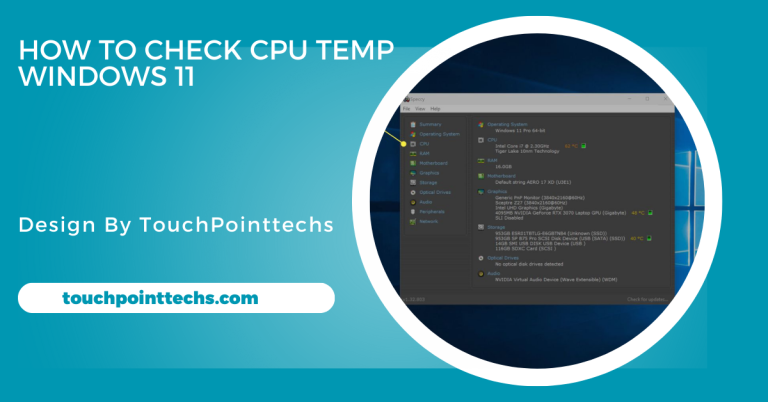Cpu Fan Eft – A Complete Guide!
CPU fan EFT (Electrical Fast Transient testing) evaluates the reliability and performance of CPU fans under electrical fluctuations. This ensures that fans provide effective cooling and prevent overheating in computers.
In this article, we will explore what CPU fan EFT is, its importance, how to choose the right one, common issues, and troubleshooting tips. This guide will help you understand everything you need to know in simple and easy language.
Table of Contents
What is CPU Fan EFT?
Definition of CPU Fan EFT:
CPU fan EFT stands for Electrical Fast Transient testing for CPU fans. This testing method is used to evaluate how well a CPU fan can operate under sudden electrical changes or spikes.
During these tests, engineers simulate different electrical conditions to check if the fan can withstand these variations without failing. This is essential because it ensures that the fan will function properly even in unpredictable environments.
Why is CPU Fan EFT Important?
Understanding CPU fan EFT is important for several reasons:
- Reliability: Testing ensures that the fan will continue to work properly over time, preventing overheating. An unreliable fan could lead to system crashes or hardware damage.
- Performance: EFT testing helps in assessing the fan’s efficiency, ensuring it provides adequate cooling to the CPU. A fan that works well under stress is vital for maintaining optimal CPU performance.
- Quality Control: Manufacturers use EFT testing to ensure their products meet quality standards. This testing process helps to weed out defective fans before they reach consumers, enhancing overall product reliability.
The Role of CPU Fans:
How CPU Fans Work:
A CPU fan is responsible for cooling the processor by dissipating heat. The CPU generates a lot of heat during operation, and if it gets too hot, it can slow down or even fail.
The CPU fan pulls cool air into the computer case and blows it over the CPU, which helps to keep the temperature down. This is essential because excessive heat can cause the CPU to malfunction or even fail permanently.
Types of CPU Fans:
There are different types of CPU fans available on the market:
- Stock Fans: These come pre-installed with the CPU and are usually sufficient for basic computing tasks. However, they may not provide optimal cooling for more demanding applications like gaming or video editing.
- Aftermarket Fans: These are third-party fans designed to offer better cooling performance and quieter operation than stock fans. They often feature larger blades, better bearings, and improved airflow.
- Liquid Cooling Systems: Instead of a fan, this system uses liquid to transfer heat away from the CPU. Liquid cooling systems can be more effective than traditional fans, especially for overclocked CPUs, but they are typically more expensive and complex to install.
Choosing the Right CPU Fan:
Factors to Consider:
When selecting a CPU fan, there are several factors to keep in mind:
- Compatibility: Ensure that the fan fits your CPU socket type. Different CPUs have different mounting mechanisms, so check the specifications before purchasing.
- Cooling Performance: Look for a fan with good airflow (measured in CFM – cubic feet per minute) and static pressure ratings. Higher CFM means more air movement, while higher static pressure is important for fans that need to push air through heatsinks.
- Noise Level: Some fans operate quietly, while others can be quite loud. If you prefer a quieter system, look for fans with lower noise ratings (measured in dBA).
- Size: Fans come in various sizes, typically measured in millimeters (mm). Common sizes are 120mm and 140mm. Ensure the fan fits in your case and provides adequate airflow for your specific setup.
- Aesthetics: Some users also consider the design and lighting of their fans. Many modern fans come with RGB lighting, allowing you to customize the look of your build.
Popular Brands:
Some well-known brands for CPU fans include:
- Noctua: Renowned for quiet operation and high performance, Noctua fans are a favorite among PC builders and enthusiasts. They are often praised for their reliability and long lifespan.
- Cooler Master: Offers a wide range of fans suitable for different budgets and cooling needs. They have both budget-friendly options and high-performance models.
- Corsair: Known for stylish designs and effective cooling solutions, Corsair fans often come with customizable RGB lighting, making them a popular choice for gaming setups.
- be quiet: This brand specializes in silent cooling solutions and is known for producing high-quality, quiet fans.
Troubleshooting CPU Fan Issues:
Common Problems:
Even the best CPU fans can face issues. Here are some common problems you might encounter:
- Fan Not Spinning: If your fan is not spinning, it could be due to several reasons, such as a power issue, faulty fan, or incorrect connection to the motherboard.
- Excessive Noise: If your fan is making loud noises, it may be due to dust buildup or a mechanical failure. A noisy fan can be annoying and might indicate that it needs maintenance.
- Overheating CPU: If the fan is not working effectively, the CPU may overheat, leading to system instability, crashes, or thermal throttling. This can severely affect the performance of your computer.
Solutions:
- Check Connections: Ensure that the fan is properly connected to the motherboard and is receiving power. If the fan is connected to a fan controller, make sure it is functioning correctly.
- Clean the Fan: Dust buildup can affect performance. Use compressed air to clean the fan and heatsink regularly. Dust can block airflow, leading to overheating.
- Replace the Fan: If the fan is damaged or not working, consider replacing it with a new one. Ensure that the replacement fan is compatible with your CPU socket.
- Monitor Temperatures: Use software tools to monitor CPU temperatures. This can help you determine if your cooling solution is effective. If temperatures are consistently high, it may be time to upgrade your cooling solution.
FAQ’s
1. What does CPU fan EFT stand for?
CPU fan EFT stands for Electrical Fast Transient testing. This testing method evaluates how well CPU fans can handle sudden electrical fluctuations to ensure reliable performance.
2. Why is CPU fan EFT important?
It is crucial for ensuring the reliability and performance of CPU fans. Effective testing helps prevent overheating and system failures, keeping your computer running smoothly.
3. What are the common types of CPU fans?
Common types of CPU fans include stock fans, aftermarket fans, and liquid cooling systems. Each type offers different cooling capabilities, suited for various computing tasks and performance levels.
4. How can I choose the right CPU fan?
To choose the right CPU fan, consider factors like compatibility with your CPU socket, cooling performance, noise levels, and physical size. Additionally, aesthetics can be important for custom builds, especially with RGB lighting.
5. What should I do if my CPU fan is not spinning?
If your CPU fan is not spinning, first check the power connections to ensure it’s correctly connected. If the connections are fine, consider cleaning the fan from dust or replacing it if it appears damaged or malfunctioning.
Conclusion
In conclusion, understanding CPU fan EFT (Electrical Fast Transient testing) is essential for ensuring the reliability and efficiency of CPU fans. By evaluating how well fans can withstand electrical fluctuations, users can prevent overheating and maintain optimal performance. Choosing the right fan based on compatibility, cooling performance, and noise levels further enhances system stability and longevity.







